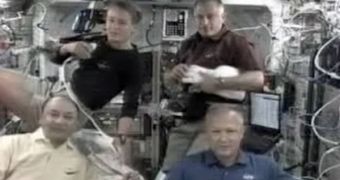Very few people have actually given sneezing in space a thought, but astronauts learn the hard way that doing it right can be crucial to the success of their mission. That is to say, while the outside of a spacesuit helmet can be wiped with relative ease during an extra-vehicular activity (EVA), the interior not that much. If the spacewalker sneezes on the inside and hits the glass shield, then his or her vision will be impaired for the remainder of the mission.
In a communication session addressing questions the astronauts aboard the space shuttle Endeavor received via YouTube, posts and Twitter messages, veteran space flier David Wolf revealed that the secret was to “aim low.” Most spacesuits have helmets that feature large glass visors, but they only extend to a point that allows their users to see what's directly in front of them. If they want to look at their feet, they need to make a considerable amount of effort.
Wolf added that the best way to sneeze was to aim your head as downwards as possible. The droplets will then not spread all over the glass, and prevent spacewalkers from accomplishing the tasks at hand. In the six EVAs that Wolf made, he came across this problem repeatedly. At an average of five to seven hours spent in space on each spacewalk, a sneeze can mean a forfeit of the mission altogether. What's worse is that the sneeze doesn't come alone. A runny nose usually accompanies it, and there is no way of wiping it in a spacesuit.
“Aim low, off the windshield, because it can mess up your view and there's no way to clear it. That's how you do it,” Wolf said from the ISS on Monday, quoted by Space. The astronaut is currently a mission specialist for Endeavor's STS-127 mission to the space station, and is part of the 16-day flight that will see a number of assemblies and repairs being made on the laboratory.

 14 DAY TRIAL //
14 DAY TRIAL //